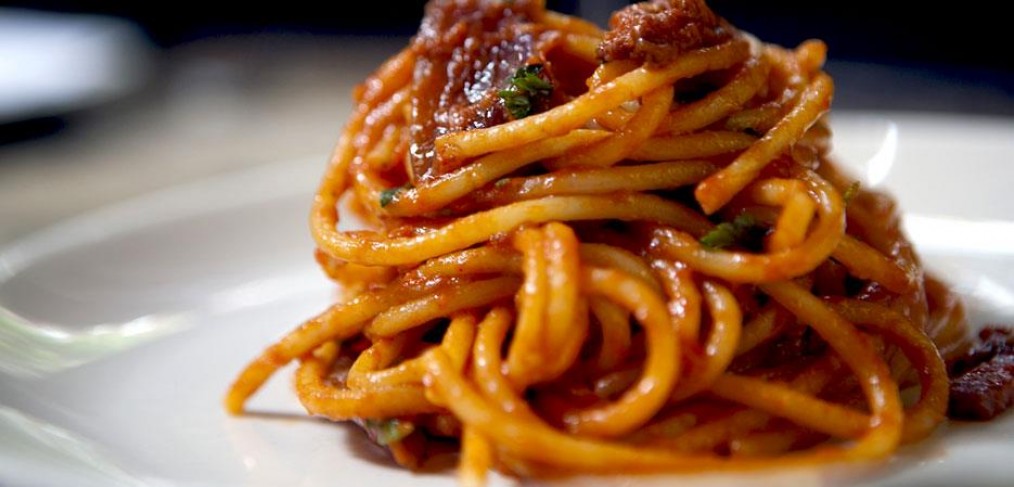ITALIAN ICONS: AMATRICIANA PASTA
The inhabitants of Amatrice, a small town in Latium, were up in arms defending their local dish which, at the time of this heated debate, actually won official recognition as a typical speciality. The town mayor in person sent a note to the TV programme pointing out that the only ingredients entitled to go into an amatriciana sauce are: guanciale (Italian cheek bacon), pecorino cheese, white wine, San Marzano tomatoes, pepper and chilli pepper. An emblematic episode of the possessive affection and parochial pride Italians show towards their local recipes.
However, there is another debate that has always accompanied amatriciana (aka matriciana) pasta sauce: that of its origins. Today, Amatrice is a small Italian town in Rieti province of Latium which, until 1927, was part of the region of Abruzzo. Hence the discussion.
Here, in brief, are the mandatory rules for making this famous sauce for Amatriciana pasta recipe:
– Only spaghetti, and not bucatini, may be used for this dish, as indicated on a road sign marking the town boundaries of Amatrice.
– Tomatoes, which were only available after 1800, are allowed for, even though the original version does not contemplate them: in fact, Amatriciana was originally a so-called “white sauce” and used to go under the name of “gricia”.
– Purists use the term matriciana rather than amatriciana because the inhabitants of Amatrice used to be called “Matriciani”, without the A, so, consequently, the acclaimed sauce was called “ Matriciana”; it acquired an A in the course of time as the language evolved.
– One of the fundamental ingredients is guanciale, and it would be an error to replace this with any ordinary bacon. Made from the pig’s cheek, guanciale fat is noble and aromatic and therefore considered to be more of a delicacy than the bacon made from belly fat. Use 50 g per head.
– Amatrice also produces a pecorino cheese that tends to be less salty but piquant in taste: do not attempt to replace it with any type of cheese. A real foodie would catch you out immediately.
– Never use tomato sauce: only peeled tomatoes will do. Our advice is to use no more than 250 g for 4 servings, even if the recipe given by the official website mentions 500 g. The final effect should be pinkish rather than bright red.
– There is also a strict rule regarding the type of fat to use: one spoonful of pork lard. If you really can’t get any, use a drizzle of oil or, better still, nothing at all: when the guanciale melts it will leave enough fat in the bottom of the pan (which must be a cast iron one) to give the necessary flavour to the spaghetti.
– Tradition also allows for a drop of white wine sprinkled on the guanciale and left to evaporate, but it is not strictly necessary. According to chef Romano Antonello Colonna, this is a little trick that confers the right amount of acidity to the dish.
A real gourmet will recognize the expert hand behind a perfect Amatriciana, also by how crisp the strips of guanciale are: never underdone because the uncooked fat would be unpleasant to the palate, but never burnt either to the point of turning black, since this would give the entire dish an unpleasantly bitter aroma. In a perfect amatriciana, the strip of guanciale enwrapping the pasta bursts on the palate like crackling despite the fact that the pecorino cheese melted by the heat has enfolded it in a tender embrace.
Read full article on Fine Dining Lovers.com
Fine Dining Lovers.com – 24 aprile 2015

